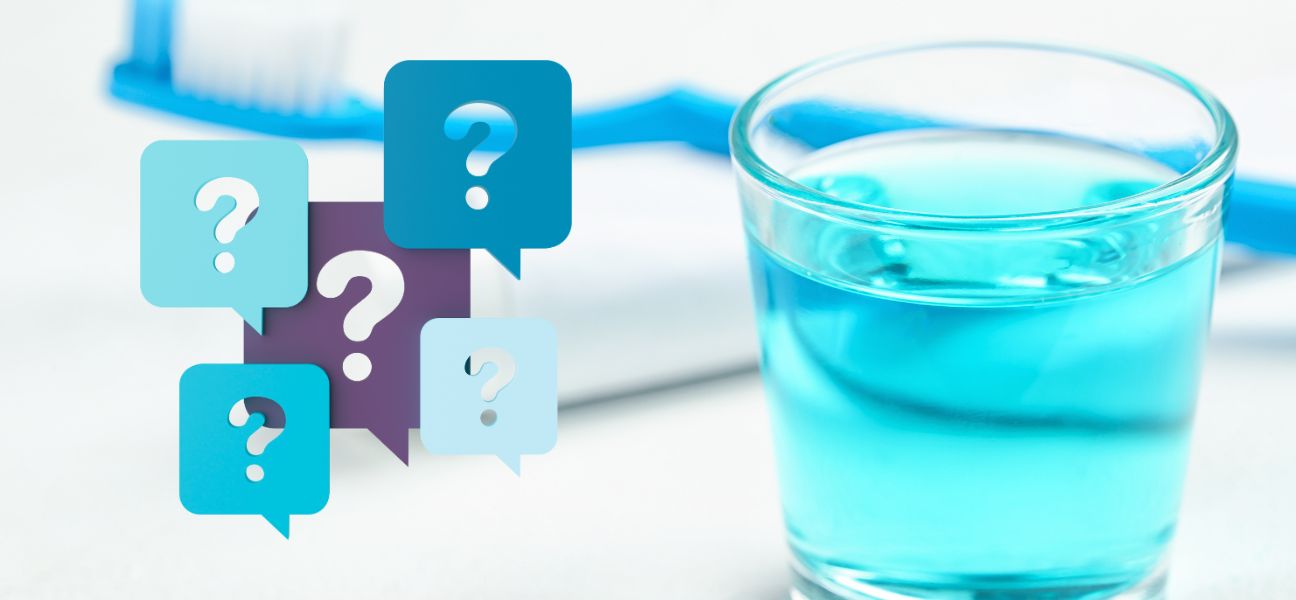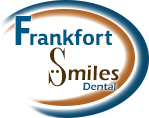53% of adults rinse immediately after swishing mouthwash, unknowingly flushing away its benefits. So, are you supposed to rinse after mouthwash?
As a dentist at Frankfort Smiles Dental in Illinois, I’ve seen how this simple mistake impacts oral health outcomes. The answer to whether you should rinse isn’t universal – it depends on your mouthwash type and goals.
Fluoride-based formulas, for example, require time to strengthen enamel. Rinsing too soon dilutes their protective effects. Cosmetic mouthwashes designed for fresh breath work differently, but even these have nuances. Timing matters more than most realize.
At our dental office, we guide patients to maximize their oral care routine. Proper technique prevents bad breath longer and supports gum health. This article breaks down:
- How active ingredients determine aftercare steps
- Why skipping the sink could transform your dental health
- Expert-approved methods for different mouthwash types
Key Takeaways
- Immediate rinsing reduces fluoride’s enamel-strengthening effects
- Cosmetic vs. therapeutic formulas demand different approaches
- Swishing duration impacts bad breath prevention
- Dental professionals recommend tailored routines
- Proper use enhances overall mouth health
Understanding the Role of Mouthwash in Your Oral Hygiene

Mouthwash serves as a critical partner in dental care, yet its purpose often gets misunderstood. Dental professionals stress its role as a supplement to mechanical cleaning methods, not a replacement. Let’s break down why this liquid solution deserves a spot in your daily routine.
The Basics of Mouthwash
Antimicrobial rinses target bacteria hiding between teeth and along gumlines. Therapeutic formulas contain fluoride or antibacterial agents to strengthen enamel and combat gingivitis. Cosmetic versions primarily mask odors but lack long-term protective benefits.
Think of mouthwash as a precision tool. While brushing removes food particles, swishing reaches crevices your toothbrush can’t access. Fluoride-rich options create a protective barrier that mineralizes weakened enamel over time.
How Mouthwash Complements Brushing and Flossing
Flossing disrupts plaque between teeth, while mouthwash flushes out debris from hard-to-reach areas. When used correctly, this one-two punch reduces bacterial colonies by up to 75%. For best results:
- Choose alcohol-free options if sensitivity occurs
- Swish for 30 seconds minimum
- Time usage after brushing and flossing
Many assume mouthwash replaces flossing – a dangerous misconception. The dental team at Frankfort Smiles Dental emphasizes flossing as a supporting player in oral hygiene when paired with mouthwash. Proper brushing also creates cleaner surfaces and healthier gums.
Are you supposed to rinse after mouthwash?

Your post-mouthwash actions determine whether those active ingredients protect or vanish. Dental professionals confirm formulation differences dictate the next steps. Therapeutic options work differently from breath-freshening counterparts.
Fluoride Mouthwash vs. Cosmetic Alternatives
Fluoride rinses require patience. Their enamel-strengthening agents need 30 minutes to bond with teeth surfaces. Rinsing with water too soon washes away 67% of protective minerals, according to recent dental studies.
Cosmetic mouthwashes focus on immediate freshness. These often lack active ingredients for long-term protection. While they mask odors effectively, their benefits disappear faster without extended contact time.
Timing and Rinsing Guidelines
Wait at least 30 minutes after using fluoride products before consuming food or drinks. This allows minerals to penetrate enamel cracks and remineralize weakened areas. Swish therapeutic formulas for 45-60 seconds to maximize coverage.
For non-fluoride options, rinsing immediately poses fewer risks. However, even breath-freshening types work better when given 2-3 minutes to neutralize odor-causing bacteria. Over-rinsing with water reduces all formulas’ effectiveness by diluting their active components.
Remember: Fluoride needs time to act, and cosmetic solutions need contact to work. Adjust your routine based on the mouthwash type you choose.
Optimizing Your Mouthwash Routine for Best Results

Proper technique transforms ordinary dental care into a powerhouse routine. Dental associations confirm that strategic adjustments boost mouthwash effectiveness by 40% compared to casual use.
Master the Swishing Timeline
Swish time directly impacts results. The American Dental Association recommends 30-60 seconds for most formulas. Fluoride needs this window to bond with enamel. Less than 30 seconds? Up to 50% of active ingredients get wasted.
To Gargle, Or Not Gargle
To gargle or not to gargle? It’s something many do, but also something many do not do at all. So, should you gargle with mouthwash? The answer is yes, as mouthwash can help enhance your oral hygiene routine. While it shouldn’t be seen as a replacement for brushing and flossing, adding mouthwash to your daily regimen can provide additional benefits.
For those with sensitive teeth or mouth ulcers, using an alcohol-free mouthwash can be especially soothing. Ideally, you should rinse your mouth with mouthwash right after brushing your teeth to maximize its effectiveness, but remember to rinse your mouth with water immediately after using mouthwash to avoid any irritation if using fluoride-free mouthwash. If you are using fluoride-based mouthwash, wait at least 30 minutes before rinsing with water.
Sequence Matters More Than You Think
Always brush and floss first. This sequence removes plaque so therapeutic ingredients penetrate better. Using mouthwash immediately after brushing your teeth creates a protective fluoride layer over clean surfaces.
A common mistake: rinsing with water too soon. Even a quick splash removes 30% of active agents. Wait at least 15 minutes before drinking liquids for maximum absorption.
| Do’s | Don’ts |
|---|---|
| Brush first, rinse last | Use mouthwash before flossing |
| Swish 45 seconds minimum | Rush through the process |
| Wait 15+ minutes before drinking | Immediately wash with water |
Adjust your nightly routine first – saliva production slows during sleep, giving fluoride extra time to work. Morning users should time their swishing before breakfast to protect their teeth from acidic foods.
Incorporating Mouthwash into Your Daily Dental Care
Strategic mouthwash use boosts your oral care results when timed right. Think of it as the final polish after scrubbing dishes – it enhances but doesn’t replace the main cleaning work. Dental research shows that daily users experience 31% fewer cavities than occasional swishers.

Integrating Mouthwash with Your Oral Care Routine
Follow this sequence for maximum impact: brush, floss, and then rinse. Swishing first washes away toothpaste fluoride. Flossing after rinsing? You’ll reintroduce debris between teeth.
| Smart Habits | Common Errors |
|---|---|
| Use therapeutic formulas post-flossing | Swishing before brushing |
| Wait 30 minutes before eating/drinking | Using mouthwash as a floss substitute |
| Limit to 2x daily for alcohol-based types | Overusing whitening rinses |
Morning and evening sessions work best. “Nighttime use lets fluoride strengthen enamel during sleep hours,” notes the American Dental Association. Alcohol-free options suit midday freshness without drying your mouth.
When to Use Mouthwash Throughout the Day
Post-meal swishes neutralize acids from snacks and drinks. Keep travel-sized bottles handy for:
- After coffee breaks
- Following spicy lunches
- Post-workout hydration
Wait 15 minutes after acidic foods to avoid enamel erosion. Consistent use strengthens gums and reduces plaque buildup by 22% over six months. Remember, it’s your hygiene wingman, not the star player.
Common Pitfalls and Mistakes in Using Mouthwash

Many dental patients unknowingly sabotage their oral care through routine errors. These missteps reduce effectiveness and may even worsen dental issues over time. Recognizing these habits helps protect your smile.
Risks of Rinsing Immediately After Use
Dousing your mouth with water post-rinse flushes away protective agents. Fluoride needs 30+ minutes to bond with enamel – rinsing cuts this process short. Studies show this mistake reduces cavity prevention by 52%.
Alcohol-based formulas dry oral tissues when overused. Swishing more than twice daily disrupts saliva production. This creates an environment where plaque thrives, increasing gum disease risks.
Overuse and Misapplication Issues
Doubling up on mouthwash doses doesn’t double protection. Excess use kills beneficial bacteria that maintain oral balance. Symptoms like burning gums or white tongue patches signal overuse.
Mixing incompatible products causes problems. Combining whitening rinses with acidic formulas erodes enamel. Always check ingredient lists for conflicting active components.
| Common Error | Better Approach |
|---|---|
| Quick water rinse | Wait 30+ minutes |
| 4+ daily uses | Limit to 2 sessions |
| Swallowing rinse | Spit thoroughly |
Proper technique matters most. Follow product instructions precisely for optimal plaque control and gum health. Your dental team can tailor recommendations to your specific needs.
Expert Dental Guidance from Frankfort Smiles Dental
At Frankfort Smiles Dental, we craft oral care plans that are as unique as your smile. Our Illinois-based team combines clinical expertise with personalized attention, helping patients achieve lasting dental health. Tailored strategies address specific concerns like sensitivity or early gum inflammation.

Custom Care for Lasting Results
Your fluoride needs differ from your neighbor’s. Patients with enamel erosion might require prescription-strength toothpaste, while those managing gum disease benefit from antimicrobial rinses. We evaluate:
- Current brushing techniques
- Flossing consistency
- Existing dental work
Recent data shows customized plans reduce cavities by 38% compared to one-size-fits-all approaches. Those using therapeutic mouthwash under guidance reported 52% fewer gum bleeding incidents. Pair professional advice with daily habits for maximum impact.
| General Advice | Additional Tips |
|---|---|
| Brush twice daily | Use an Electric brush + angled technique |
| Use fluoride toothpaste | 5000ppm formula for weak enamel |
| Floss regularly | Use a Water flosser + interdental brushes |
Schedule biannual checkups to refine your routine with us! Our team identifies early warning signs – like acidic saliva or plaque buildup – before they escalate. Combine home care with expert oversight for a truly healthy mouth.
Maximizing Benefits: Tips and Tricks for a Healthier Smile

Unlock your mouthwash’s full potential by matching its formula to your dental needs. The right combination of active ingredients and application techniques can elevate your oral hygiene game from basic to exceptional.
Tips on Choosing the Right Mouthwash
Scan labels like a dental detective. Fluoride-containing options strengthen enamel, while alcohol-free versions prevent dry mouth. Those targeting bad breath should contain zinc chloride or cetylpyridinium chloride for lasting freshness.
- Consider your specific concerns:
- Sensitive gums? Seek soothing aloe vera
- Plaque buildup? Opt for antibacterial formulas
- Weak enamel? Prioritize 0.05% fluoride content
Enhancing Fluoride Effectiveness
Timing transforms fluoride from passive to powerful. Nighttime use allows 6-8 hours of enamel repair while sleeping. Avoid eating or drinking for 30 minutes post-rinse – even water dilutes its benefits.
Pro tip: Swish therapeutic formulas first thing in the morning before brushing. This preps your gums for better fluoride absorption from toothpaste.
Additional Techniques for Superior Oral Hygiene
Pair your rinse with these habits for best results:
- Brush at 45-degree angles to clean gumlines
- Floss before using mouthwash to flush debris.
- Replace toothbrushes every 3 months
Post-meal swishing neutralizes acids from foods. Keep travel-sized bottles handy for midday freshness without disrupting your core oral health routine.
| Smart Upgrade | Common Mistake |
|---|---|
| Match formula to dental needs | Using minty rinses as floss substitutes |
| Nighttime fluoride application | Rinsing immediately after acidic meals |
Consistency beats intensity. Daily use of mouthwash correctly delivers more benefits than occasional perfect use. Your smile reflects the care you invest – make every swish count.
Conclusion

Your smile’s defense system relies on smart mouthwash strategies. Fluoride formulas demand patience – skipping post-rinse water preserves their enamel-strengthening power. Cosmetic versions offer temporary freshness but lack lasting protection without proper contact time.
Optimize your oral care routine with these steps:
- Brush and floss first to clear debris
- Swish therapeutic rinses 45+ seconds
- Avoid eating/drinking for 30 minutes
Frankfort Smiles Dental patients see 31% fewer cavities through customized plans. Proper technique prevents rinsing away active ingredients while boosting gum health. Consistent use reduces plaque buildup and neutralizes odor-causing bacteria effectively.
| Do | Don’t |
|---|---|
| Match formulas to dental needs | Use mouthwash before brushing |
| Consult dentists for guidance | Swallow alcohol-based rinses |
Your teeth deserve expert-backed care. Schedule a consultation to refine your approach because optimal oral health starts with knowledge you can trust.
FAQ: Are You Supposed to Rinse After Mouthwash?

Does mouthwash replace brushing or flossing?
No. Mouthwash is a supplemental step that works with brushing and flossing to remove debris, reduce plaque, and freshen breath. Always prioritize brushing twice daily with fluoride toothpaste and flossing once a day.
Should I rinse my mouth with water after using mouthwash?
Avoid rinsing immediately. For fluoride-based formulas like ACT Anticavity, wait at least 30 minutes to let the fluoride strengthen the enamel. Cosmetic mouthwashes (e.g., Listerine Cool Mint) may not require waiting, but check labels.
How long should I swish mouthwash for maximum benefits?
Aim for 30–60 seconds. This allows active ingredients like cetylpyridinium chloride (in Crest Pro-Health) to neutralize bacteria or fluoride to bond with teeth. Over-swishing can irritate gums.
Is it better to use mouthwash before or after brushing?
For fluoride retention, use it after brushing and flossing. Brushing first removes plaque, letting the mouthwash ingredients penetrate better. Avoid eating or drinking for 30 minutes afterward.
Can overusing mouthwash harm oral health?
Yes. Alcohol-based options (like original Listerine) can dry the mouth if used excessively, reducing the saliva that fights cavities. Stick to twice daily unless your dentist advises otherwise.
What type of mouthwash is best for gum disease prevention?
Look for therapeutic formulas with antiseptics like chlorhexidine (Peridex) or essential oils. Brands like TheraBreath target bacteria linked to gingivitis. Always consult your dentist for personalized recommendations.
Why does my mouthwash sometimes cause a burning sensation?
Alcohol or strong antiseptics in products like Scope Classic can irritate sensitive tissues. Switch to alcohol-free alternatives such as CloSYS or ACT Total Care if discomfort persists.
Can children use adult mouthwash safely?
Only under supervision. Many adult formulas contain fluoride levels unsuitable for kids under 6. Opt for child-specific options like Colgate Kids Anticavity, and teach proper swishing to avoid swallowing.


